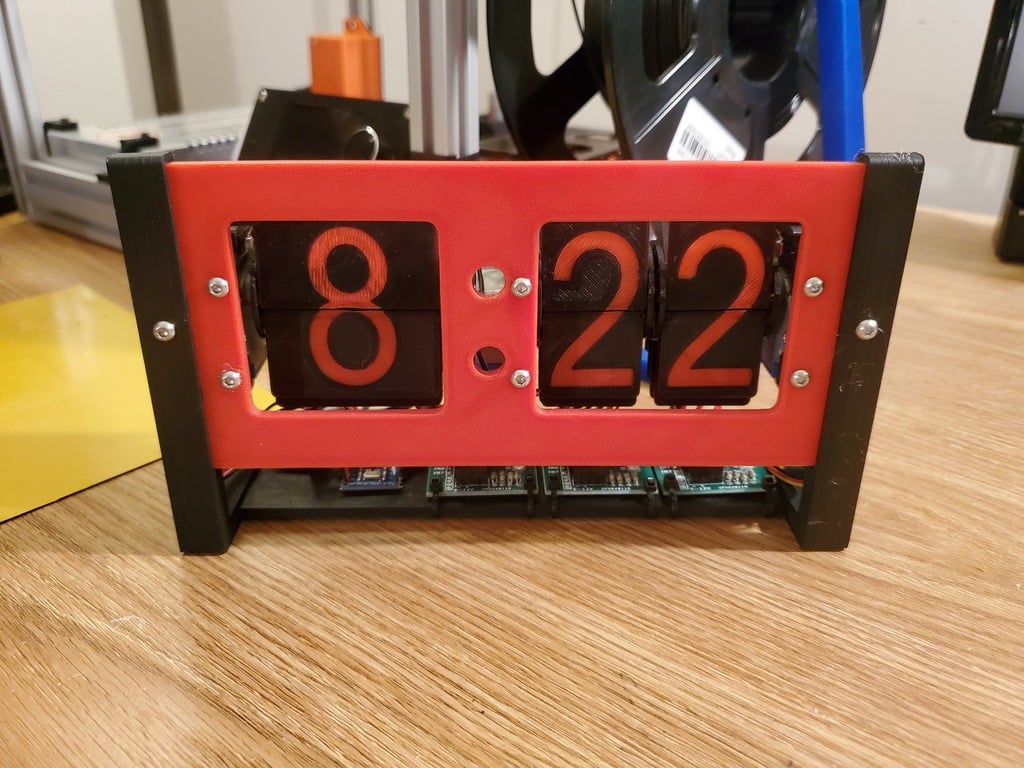
Flip Clock v2 - Arduino-Powered Split-Flap Clock
thingiverse
For the latest files and updates, check out the GitHub page: https://github.com/alexyu132/flipclock I finally finished my flip clock design. Compared to the original version, this one now has mechanical endstops on its displays for greater reliability. The driver code is now included, along with a full BOM and assembly guide. https://www.youtube.com/watch?v=v2_D-W6b9TM # Flip Clock v2 ## Arduino-powered clock using split-flap mechanical displays. ## Features - Automatic time setting on sketch upload - RTC module keeps track of time even when unpowered - US DST support - clock automatically skips forward/back 1 hour as needed - Runs off of Arduino's USB power - no separate power input needed - Automatic calibration once per rotation using mechanical endstops - Steppers turned off when not moving for power savings # Non-printed parts | Part | Quantity | Notes | |---|---|---| | M3x10mm button head screw | 17 | | | M3 lock nut | 17 | | | 28byj-48 stepper motor | 3 | | | ULN2003 stepper driver | 3 | | | Pro Micro or similar small Arduino (5V) | 1 | | DS3231 RTC module | 1 | | PCB endstop | 3 | Will need to cut the switches off and solder leads to the C and NO pins | | Zip ties | Varies | | | Wires (22AWG or similar) | Varies | | | Double-sided tape | Varies | | # Printing The parts are designed to print without supports. Recommended layer height is 0.2mm or lower. The numbers on the flaps are inset by 0.2mm, so these parts are recommended to be printed at a 0.2mm height. If you don't want to color in the numbers manually, you can pause the print after the first layer and swap to a different filament color. Make sure to pause before the last layer to swap the original color back in. # Assembly ## Electronics Tray 1. Attach the stand pieces to the sides of the electronics tray using bolts and lock nuts. 2. Secure the Arduino and RTC module to the electronics tray with double-sided tape. ## Faceplate and Displays 1. Attach the faceplate to the electronics tray using bolts and lock nuts. 2. Attach the displays to the faceplate using bolts and lock nuts. ## Stepper Drivers and Cables 1. Wire the stepper drivers to the Arduino. 2. Route the cables through the rear stepper driver holes and secure them with zip ties. # Calibration and Operation The driver code is provided in the 'flipclock' folder. Edit the configurable parameters at the top of the file as needed. When uploading the sketch, be ready to quickly unplug the clock if any of the displays are turning backwards, as this could damage the endstop switches. If a display turns backwards, reverse the order of the pins for that display in the sketch file.
With this file you will be able to print Flip Clock v2 - Arduino-Powered Split-Flap Clock with your 3D printer. Click on the button and save the file on your computer to work, edit or customize your design. You can also find more 3D designs for printers on Flip Clock v2 - Arduino-Powered Split-Flap Clock.
